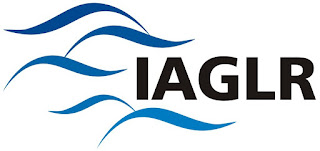While the spring thaw will be a welcome change of weather in most of the country, there is a risk that snow melt and spring rains could lead to rivers exceeding flood levels.
“The continuation of winter weather, above-average snowpack, frozen ground and thick ice coverage on streams and rivers will delay spring flooding into April in the upper Midwest eastward to New England.
The intensity of the flooding will depend on the rate of snow and ice melt, and future rainfall.
Continued well-below average temperatures this winter resulted in significant river ice formation and ice jams in locations further south than customary, flooding homes and businesses, and impacting river commerce.
There is also an elevated risk of more ice jams this spring in the northern tier of the U.S. from Montana eastward to northern New England.
‘This year’s spring flood potential is widespread and includes rivers in highly populated areas putting millions of Americans at risk,’ said Louis Uccellini, director, NOAA’s National Weather Service.
‘Although widespread major river flooding is not expected, an abrupt warming or heavy rainfall event could lead to isolated major flooding.'”
Read the rest of the article at the link above.
Najwa Obeid’s experiences as a Knauss Fellow at the National Science Foundation can perhaps most accurately be described as diverse. And that diversity, she said, will go a long way in helping her achieve her goal of working on water and coastal policy.
Her greatest exposure to policy came while participating in an ecosystem-based management working group with representatives from agencies like the Department of the Interior, NOAA, the U.S. Navy and EPA. Ecosystem-based management is a type of resource management that focuses on whole ecosystems instead of individual species or resources and is one of nine policy recommendations included in the National Ocean Policy Implementation Plan. The group – officially known as the National Ocean Council ecosystem-based management interagency subgroup – was charged with determining what this recommendation meant for each agency and identifying work priorities and pilot projects. In her role with the National Science Foundation, Najwa identified science and knowledge gaps and connected the group with academic experts.
“I have a better idea now of how things do and should work, particularly when there are a lot of agencies involved,” said Najwa, a Ph.D. candidate at University of Illinois Urbana-Champaign. “Reading about the work is one thing, but being immersed in it adds much more value.”
And, like her co-fellow Will Tyburczy, Najwa has some advice for those considering a Knauss fellowship.
“If you have any sort of interest in policy or want to be involved with work that has a faster and more direct social impact,” she advised, “give it a try. It is a very unique and educational year.”
For more information about the Sea Grant Knauss fellowship and other fellowship opportunities, please visit the IISG
Fellowship and Scholarship page.
Dozens of researchers and government representatives will come together next month to present the latest research on Lake Michigan’s ever-changing food web during the Conference on Great Lakes Research. The session, held June 3-4, will be chaired by IISG’s Tomas Hook, along with David Bunnell from the U.S. Geological Survey and Hank Vanderploeg from NOAA.
Presentations will discuss a range of issues that help determine just what eats what in the lake. Several will focus on what happens to the diet of native species when invaders like quagga mussels, round goby, spiny water flea deplete food resources. Others will introduce how shifts in phosphorus and other nutrient levels may be behind recent changes at the bottom of the food web and compare the eating habits of forage fish over the last two decades.
The session is a part of ongoing regional efforts to improve understanding of the complicated relationships between the many different microbes, plants, and animals that call Lake Michigan home. Since 2010, IISG and other partners in the Great Lakes Regional Research Information Network have funded several studies on the links that form the food web.
“While researchers have been studying the Lake Michigan food-web for several decades, many of the interactions remain poorly described,” said Tomas. “And we are learning that there are very important regional differences in food web structures across Lake Michigan.”
In addition to serving as co-chair, Tomas will join researchers from across the Great Lakes to present the findings of three studies slated for the session. For a description of these and other presentations, visit the session schedule and click on the presentation titles.
The International Association for Great Lakes Research’s (IAGLR) 56th Annual Conference on Great Lakes Research is sponsored by IISG and Purdue University. To view the entire program, visit the conference website.



